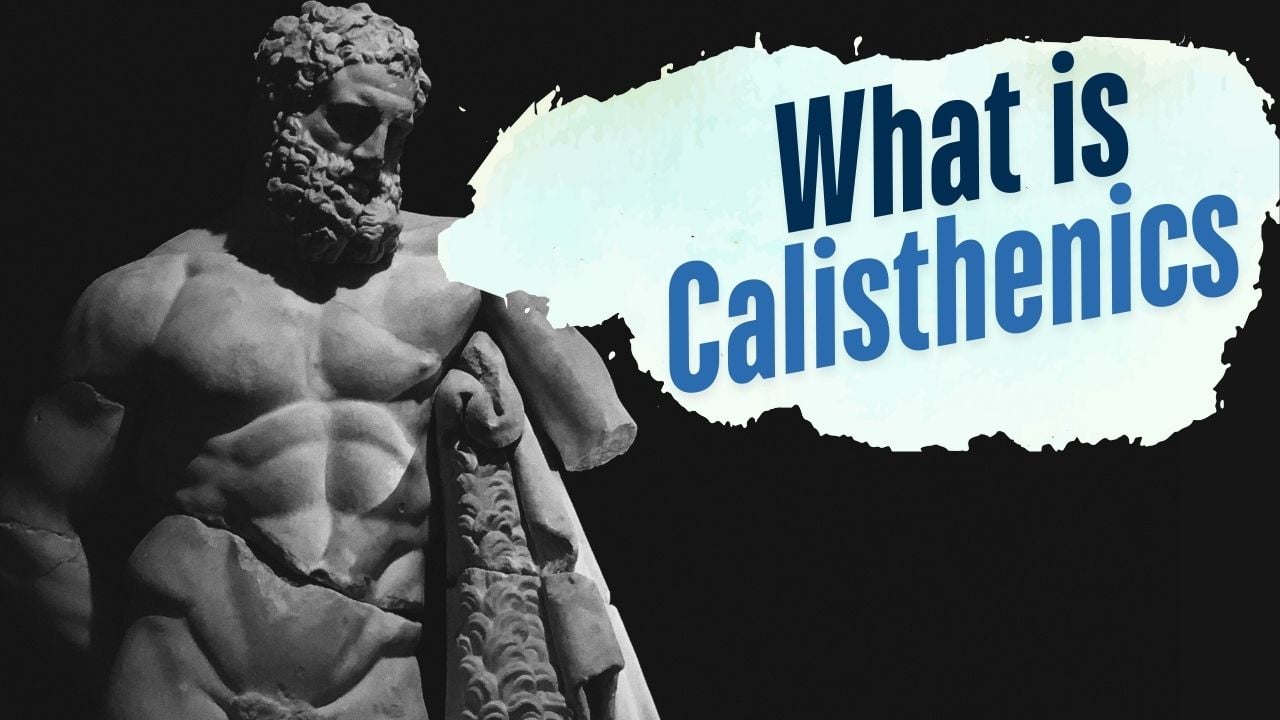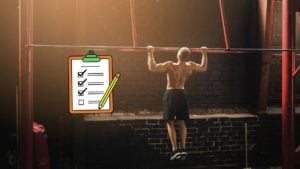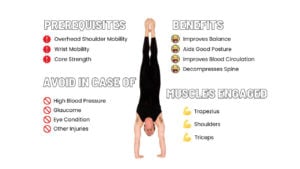In this article, we will briefly explore the meaning of calisthenics as well as the history and development of bodyweight strength training. We will introduce the development stages and some of the pioneers of modern gymnastics.
What is the definition of Calisthenics?
The definition of calisthenics depends on who you ask. At its core, calisthenics is a method of physical training that relies primarily on bodyweight movements to develop functional strength, flexibility, endurance, balance, and neuromuscular control. It includes everything from basic exercises like push-ups and squats to advanced skills like levers, planches, and handstands.
Calisthenics in a strict sense means "beauty in strength" as the word itself is derived from the Greek words "kallos" meaning "beauty" and "sthenos" meaning "strength".
Historically rooted in military, gymnastic, and cultural traditions around the world (such as radio calisthenics), calisthenics has evolved into a global discipline that spans minimalist fitness, street workout, artistic movement, and athletic performance.
Whether practiced for aesthetics, skill mastery, or health and longevity, calisthenics is ultimately about using your body as your gym — mastering movement through progressive control of your own weight in space.
The history of Calisthenics
Calisthenics has a long and rich history spanning thousands of years - it is probably as old as humankind itself. People had to improve their agility to be faster than the predators and endurance to be able to carry their prey over long distances. Back then exercise was part of everyday life, a matter of life or death.
Ancient Military Training and the Olympics
In Ancient Greece, they believed that physical fitness and mental clarity are equally important. A good citizen was virtuous in mind and body and taking care of both was a civic duty rather than a hobby.
Some experts attribute the birth of systematic training and sports competition to the first Olympic games which were held in 776 B.C.
“No man has the right to be an amateur in the matter of physical training. It is a shame for a man to grow old without seeing the beauty and strength of which his body is capable.”
Socrates
Even the word gym or gymnasium derives from the greek "gymnos" which means "naked". Yes, back then there was no need for fancy clothes if somebody wanted to hit the gym. The truth of the matter is that only males were allowed to compete, which made things less awkward.
There is evidence that bodyweight training was regularly used by the armies of Alexander the Great and the Spartans at the Battle of Thermopylae as a form of military training to prepare soldiers and also athletes for competitions and battles.
The Romans also applied this method of training to their military to develop their physical strength and agility.
In India, traditional wrestlers (pehlwans) developed their own systems of dynamic bodyweight training, including dands (Hindu push-ups) and bethaks (squats), which remain some of the most effective full-body movements around today.
The practice was also used in Ancient China, where, along with dieting, it was recommended by Han Dynasty physicians as a way to maintain a good health.
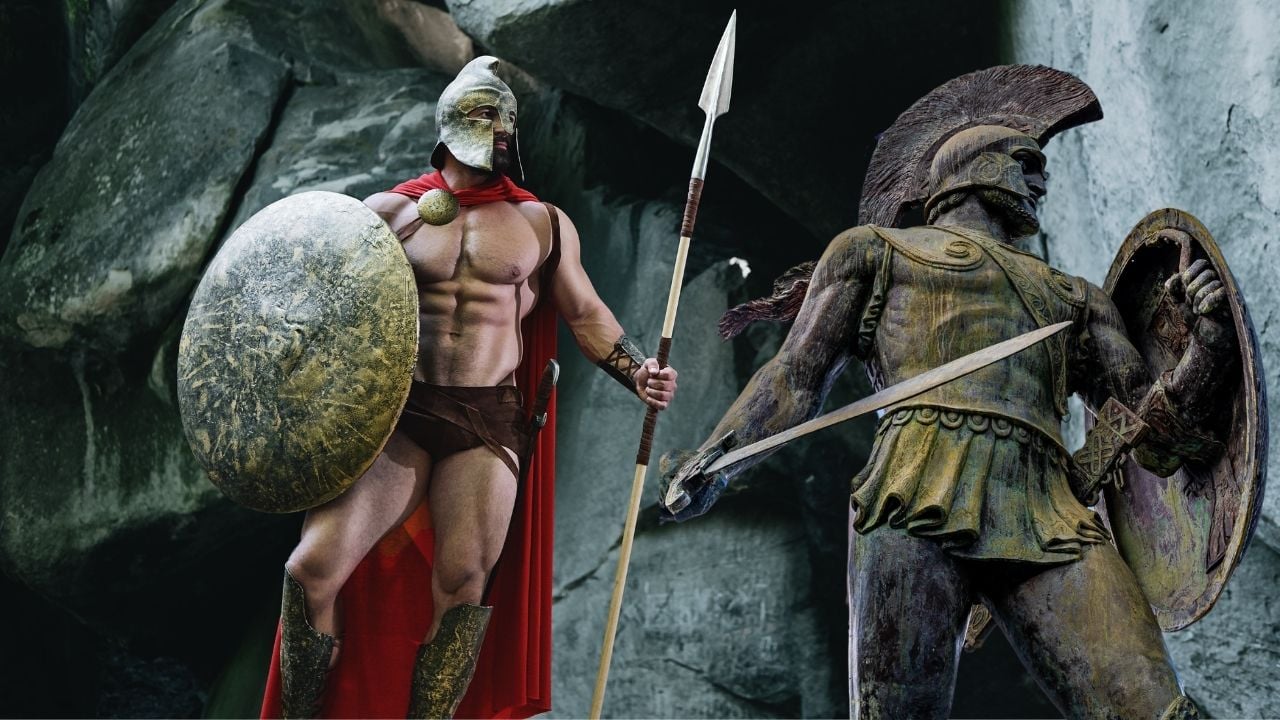
Calisthenics in the 19th century
In the 19th century with the spread of "gymnasia" - the first teacher-training institutions such as the YMCA - calisthenics started to become popular among the general public. This was a time when people were becoming more aware of the importance of physical activity and exercise, and bodyweight strength training was seen as an effective and accessible way to improve overall health and fitness.
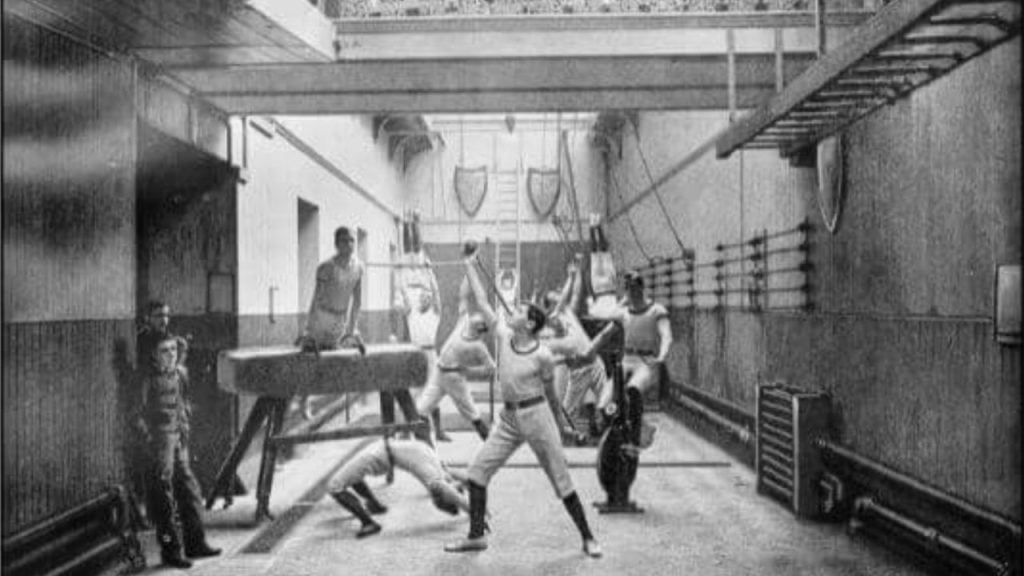
The German School of Calisthenics
In the early 19th century this was popularized by Germans Friedrich Ludwig Jahn and Adolf Spiess through the promotion of gymnastics. The German system was characterized by freestyle movements and the use of heavy equipment such as horizontal bars and jumping horses in addition to light equipment like dumbbells and wands.
Gymnastics started to spread in the US in 1820s mainly thanks to the German immigrants. This gradually gave rise to the Turner societies in the US. In addition to community service for the German-Americans they also offered gymnastics training. Turners also actively promoted the benefits of physical education and wanted it to be introduced in schools.
Another pioneer was Dioclesian Lewis who in 1860 refined the German system and invented his own way of gymnastics. He considered it too physically demanding for the masses and created a light gymnastics method suitable for men, women and children.
Swedish School of Calisthenics
It was founded by a Swede called Per Henrik Ling in the 1810s in Stockholm. After he successfully restored his health through regular exercise he decided to devote part of his life to the promotion of physical education. Besides free calisthenics, he is also credited as the father of the Swedish massage. The types of equipment used in the Swedish system were lighter than the German ones, mostly dumbbells and chest weights.
They also say that Ling's gymnastics system shaped the development of modern yoga as a form of exercise in the Western world.
Calisthenics as a form of physical training for women in the 19th and 20th centuries
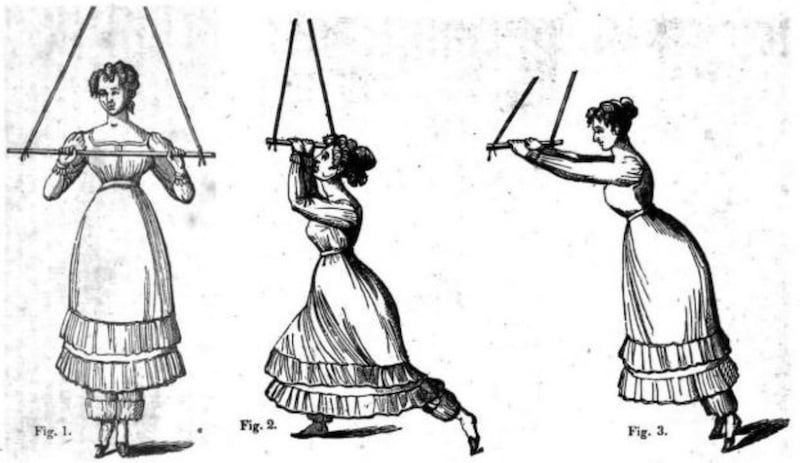
By the early 20th century, American educators like Dudley Allen Sargent and women’s health pioneers like Catharine Beecher were promoting calisthenics as accessible, effective training for both genders. These early advocates laid the groundwork for the fitness culture we know today.
Calisthenics for women was particularly emphasized by Per Henrik Ling and in the United States, Catherine Beecher was its early proponent and wrote a book on the subject, "Physiology and Calisthenics for Schools and Families," in 1857.
Beecher wasn't an advocate of the German gymnastics system as she considered it too physically demanding for the females of the era. In her eyes, calisthenics for women was a great tool to help develop beautiful and strong bodies while at the same time also contributing to the grace of movement and easy manners. For women of the time, however, it wasn't socially acceptable to exercise and wear clothes that allowed freedom of movement.
Modern Calisthenics
In the early 20th century, calisthenics was introduced into the school curriculum in the United States as a way to promote physical fitness among young people. This was part of a wider movement to improve the health and well-being of children and adolescents, and calisthenics was seen as an effective way to help young people develop strong and healthy bodies.
During this time, calisthenics also became popular among fitness enthusiasts and athletes who were looking for a challenging and effective way to build strength and improve overall fitness. Many people began to experiment with different calisthenics exercises and routines, and new techniques and methods were developed.
In the 1920s a form of social exercise started to get popular in Japan which later spread to other countries. It was called radio calisthenics or "rajio taiso" and its purpose was to promote individual well-being and health via broadcasted workouts often funded by the public.
Calisthenics Today
Today, calisthenics is still used by the military and other organizations as a form of physical training, but it has also gained popularity among fitness enthusiasts as an effective and affordable way to build strength and improve overall fitness. Many people are attracted to calisthenics because it can be done almost anywhere, without the need for expensive gym equipment or special facilities. Calisthenics has also become increasingly popular among people who are looking for a more natural and holistic approach to fitness and health.
In recent years, calisthenics has gained recognition as a legitimate form of physical training and competition, with many organizations and events dedicated to promoting and showcasing the benefits of calisthenics. This has led to an increased interest in calisthenics among people of all ages and fitness levels, and the popularity of calisthenics is only expected to continue to grow in the coming years.
The Street Workout Revolution
While the fitness industry leaned into machines and barbells in the late 20th century, calisthenics found a new home: the streets. Around the early 2000s, the street workout movement exploded in urban areas, especially in places like Eastern Europe and New York City. It was raw, creative, and deeply community-driven. Guys like Hannibal for King and teams like BarStarzz were uploading mind-blowing videos to YouTube — muscle-ups on scaffolding, levers on light poles, human flags against graffiti-covered walls.
This movement redefined what calisthenics could be. It wasn’t just about exercise — it was about self-expression, reclaiming public space, and proving that with enough discipline, anyone could become superhuman without a gym.
Types and Styles of Calisthenics
One of the things that makes calisthenics so powerful — and frankly, so addictive — is how versatile it is. Over the years, I’ve trained for strength, skills, aesthetics, mobility, and even fun group sessions with friends, all using calisthenics as my base. The more I explored, the more I realized: calisthenics isn’t a single method. It’s an umbrella for several distinct approaches, each with its own philosophy, movement patterns, and end goals.
Below, I’ve broken down the most common (and most useful) styles of calisthenics, along with real-life examples and use cases for each.
Foundational Calisthenics – The Essentials That Never Get Old
Foundational calisthenics includes the basic movements everyone should master before moving on to skills or added weight. I’m talking about:
- Push-ups (knee, incline, regular, diamond, archer)
- Pull-ups and chin-ups (dead hang, negative, assisted with bands)
- Squats (air squats, jump squats, split squats)
- Lunges (forward, reverse, walking)
- Planks, hollow body holds, and glute bridges
These movements train full-body strength and coordination with no equipment or just a pull-up bar. Even advanced athletes cycle back to these exercises to refine technique or build capacity. I often program foundational work as part of deload weeks or warm-ups, because moving with perfect form under control is always beneficial — no matter how strong you are.
A good example? I’ve worked with clients who could muscle-up but struggled with full-range push-ups. That’s a red flag. You can’t build a solid house without a strong foundation.
Skill-Based Calisthenics – The Art of Mastery
This is where calisthenics starts to look like superhuman training. Skill-based calisthenics focuses on moves that require serious time under tension, body awareness, and progression.
Some key skills include:
- Muscle-ups – pulling explosively over a bar or rings
- Handstands – balance-focused, often combined with push-up strength
- Front lever – a horizontal static hold using scapular depression and core tension
- Back lever – similar but more shoulder-extensive and easier to access
- Planche – full-body tension on hands with no feet on the floor
- L-sit and V-sit – combining core compression and shoulder depression
- Human flag – an advanced side hold requiring immense oblique and lat strength
Each of these requires a combination of specific mobility (especially in shoulders and wrists), control over joint angles, and progressive overload through variations. For example, learning the front lever might look like:
- Tuck hold
- Advanced tuck
- One-leg front lever
- Straddle lever
- Full front lever
I usually alternate between static holds, isometric work, and dynamic pulling (like front lever raises) when training these skills. Even five seconds of clean form in a tuck lever can be a great workout if you know what to focus on.
Freestyle Calisthenics – Flow, Creativity, and Explosive Power
Freestyle calisthenics is what you’ll see in street workout competitions or viral social media clips. It’s fast, expressive, and often acrobatic. Movements typically include:
- Bar spins (360s, 540s)
- Muscle-up transitions to one-arm hangs or claps
- Kip-ups, swings, and dynamic pullovers
- Flys between parallel bars
- Combos that string together static and dynamic elements (e.g. pull-up to muscle-up to bar spin to front lever)
Freestyle is all about flow and personal expression. But don’t let the flair fool you — this style demands a strong base in strength and coordination. When I’ve trained freestyle in the past, I always started my sessions with structured basics, then gradually worked in swing progressions or bar transitions once my joints were warm.
It’s fun, but it’s high-risk if you don’t respect progression. A 360 bar spin looks cool — until you miss your grip and land sideways. Been there, done that.
Isometric Calisthenics – Stillness That Builds Real Strength
Isometric training has been one of the most game-changing additions to my programming. Holding a position — like a plank or front lever — activates deep stabilizer muscles and reinforces control where you need it most.
Key examples:
- Hollow body hold – the core foundation for nearly all static holds
- Wall sits – brutal for the quads and great for tendon durability
- Planche leans – training wrist strength and forward lean for future planche work
- Tuck front lever holds
- Handstand holds against a wall or freestanding
I often use isometrics as prep sets before more dynamic strength work. For instance, holding a 10-second L-sit before your dips will fire up the core and shoulders. And because you can manipulate time under tension precisely, it’s great for joint-safe progression.
Studies have shown that isometric training improves tendon health, stabilizer recruitment, and joint integrity — especially when paired with full-range dynamic work.
Weighted Calisthenics & Streetlifting – Add Load, Build Strength
Once you can comfortably do 10–15 reps of an exercise, adding load is a logical next step. This is where weighted calisthenics comes in — and when it’s taken to a competitive level, it becomes streetlifting.
What’s included:
- Weighted pull-ups (commonly using a dip belt or holding a kettlebell)
- Weighted dips (usually with a belt, vest, or plate)
- Weighted push-ups or squats (using a weighted vest, backpack, or barbell)
- Weighted muscle-ups (advanced but part of streetlifting events)
Streetlifting is now an official sport with federations like WSLF and national championships. I’ve followed athletes who can pull over 100kg (220 lbs) in a strict weighted pull-up — which is wild when you think about it.
For my own training, I cycle in weighted pull-ups and dips in lower-rep ranges (3–6 reps) during strength-focused phases. It’s the fastest way I’ve found to increase absolute pulling power and muscle density.
Mobility-Focused Calisthenics – Strength Through Range of Motion
Mobility isn’t just stretching — it’s about building usable strength in your end ranges. Calisthenics done with this focus prioritizes:
- Jefferson curls for spinal flexibility and hamstring control
- Deep squats and Cossack squats to unlock hips
- German hangs and skin-the-cat for shoulder extension
- Active bridges for back and shoulder mobility
- Scapular wall slides and shoulder dislocates
I started integrating more mobility-focused work after dealing with wrist and shoulder irritation from skill training. I found that the more mobile I became, the more progress I made — especially in levers, planche, and handstands.
Mobility-focused calisthenics borrows from gymnastics, yoga, and even physical therapy, but it fits perfectly into strength-based bodyweight training.
Partner Calisthenics – Train With Someone, Level Up Faster
Partner calisthenics is one of the most underused — but most rewarding — training styles. I’ve used it in workshops, classes, and even just messing around with friends at the park. It can be:
- Assisted training – like helping someone complete their first pull-up
- Manual resistance – your partner provides resistance during push-ups or rows
- Counterbalance skills – double L-sits, human flags, partner planches
- Synchronized drills – mirror squats, push-up rhythms, etc.
It’s incredibly useful for developing proprioception, especially during balance work like handstands. Plus, there’s built-in accountability — and it’s just more fun.
Hybrid Calisthenics – Where All the Styles Meet
Most advanced athletes don’t stick to just one style — and neither do I. A hybrid approach blends:
- Rings for instability and vertical pulling
- Mobility drills for joint longevity
- Weighted calisthenics for strength
- Skill sessions for control and coordination
- Conditioning finishers like burpees or jump squats for endurance
For example, a week of my own training might look like:
- Monday: weighted pull-ups + front lever progressions
- Wednesday: skill session (planche leans, handstand holds) + mobility
- Friday: bodyweight push workout + L-sit core finisher
- Weekend: outdoor ring workout with mobility flows and Cossack squats
This hybrid structure keeps things interesting, well-rounded, and effective — especially for longevity.
Conclusion
Calisthenics is often described as just “bodyweight training,” but as you’ve seen, it’s so much more than that. At its core, it’s the practice of mastering your own body through strength, control, and movement — using nothing more than gravity, consistency, and your will to improve.
What started thousands of years ago as a means to prepare soldiers, athletes, and performers has evolved into a global movement. From ancient Greece to modern street workouts, calisthenics has always been about developing functional strength and athleticism without needing machines or weights. And today, it’s more accessible than ever — with countless ways to train, progress, and express yourself physically.
Understanding what calisthenics is — its roots, its principles, and its styles — is the first step to getting more out of your training. If you’ve made it this far, you’re already ahead of the game. Keep exploring, stay consistent, and let your body show you what it’s truly capable of.

